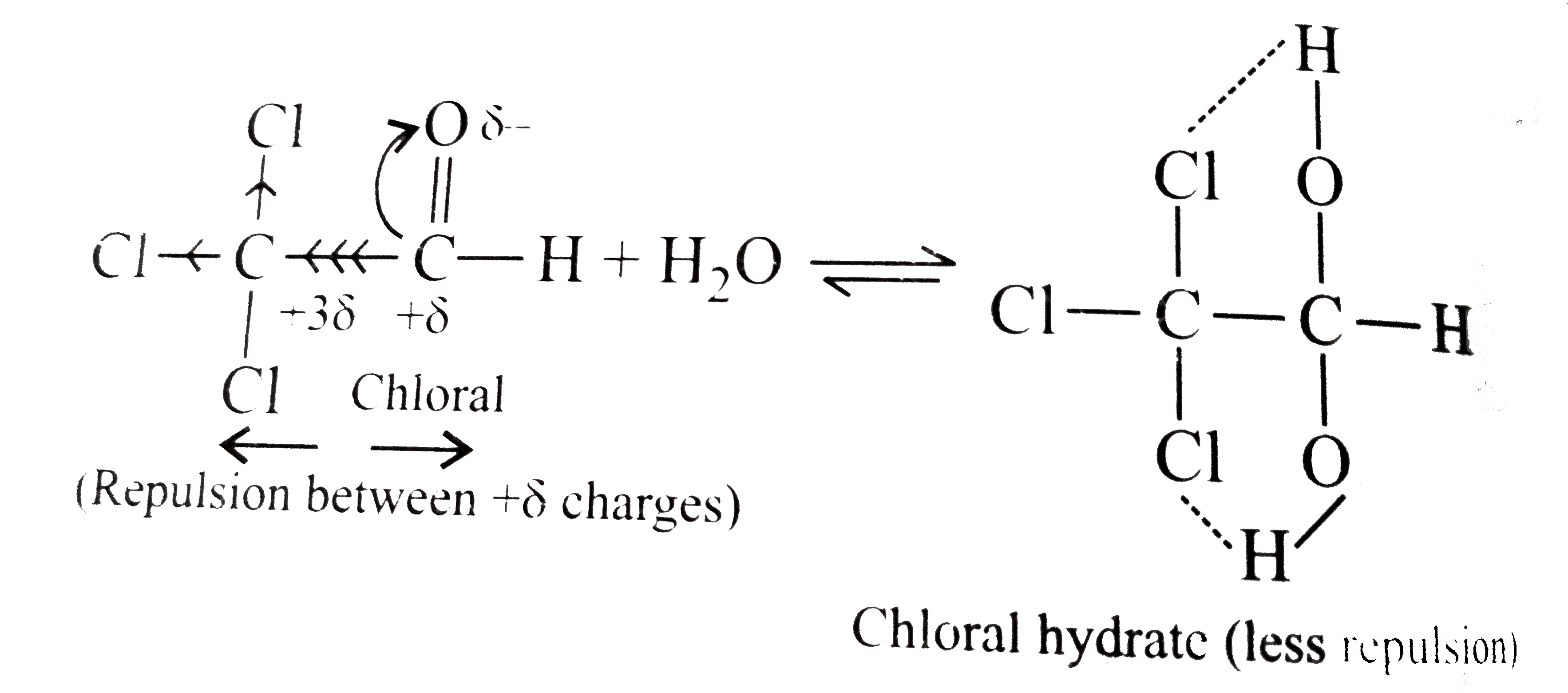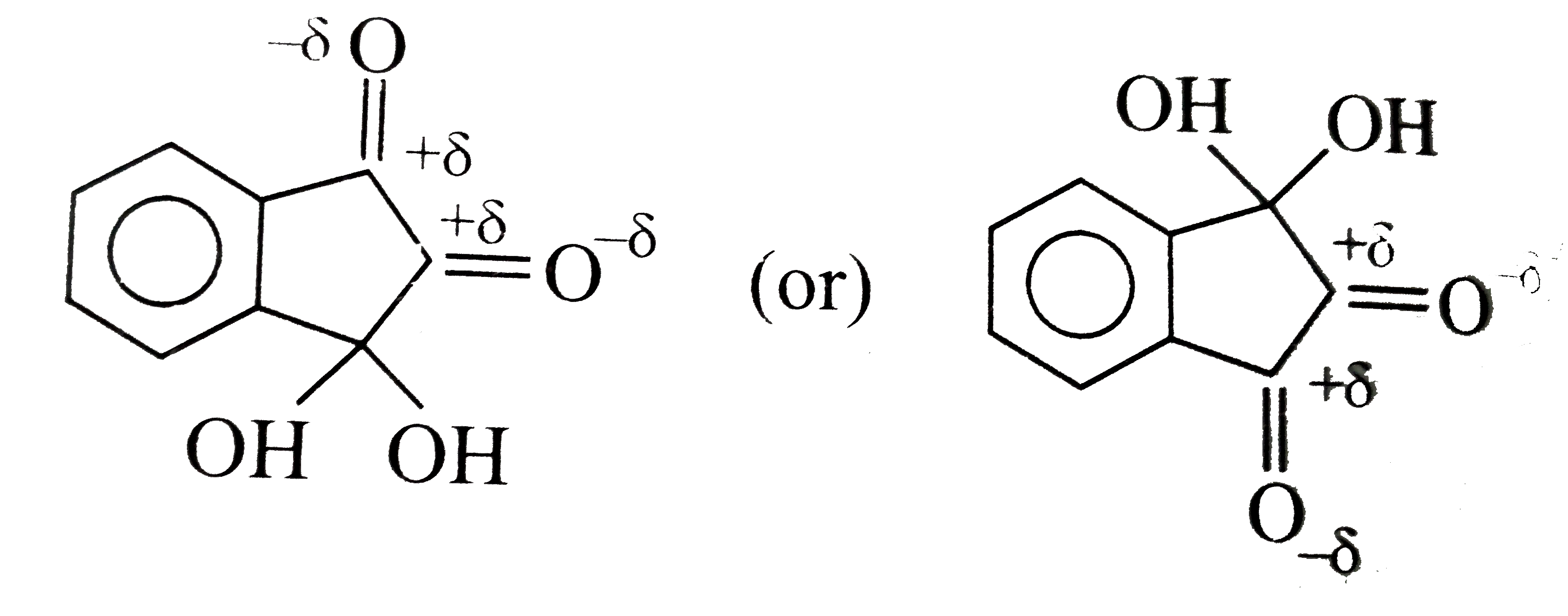Explain:
Chloral normally exists as chloral hydrate. True/False
Video Solution
Text Solution
a. In chloral, strong ¯e− withdrawing Cl atoms on C atom destabilise the carbonyl group due to repulsion between positive charges. The formation of hydrate overcomes the force of repulsion and hence equilibrium lies to the right.

Moreover, intramolecular H−bonding is possible in chloral hydrate [between (−Cl) and (−OH) groups] which stabilises the molecule.
b. The centre (C=O) is hydrated.

The adjacent δ⊕'s are separated by the hydration of central (C=O) group.
If any terminal (C=O) is hydrated, there would be repulsion on the adjacent +δ charges, e.g.,

c. 
Equilibrium between acetone and its hydrate favours the ketone. When hydrate loses water, Path I is more feasible because (C−∗O) bond is slightly stronger than (C=O) bond.
|
Topper's Solved these Questions
- ALIPHATIC AND AROMATIC ALDEHYDES AND KETONESBOOK - CENGAGE CHEMISTRY ENGLISHCHAPTER - ALIPHATIC AND AROMATIC ALDEHYDES AND KETONESEXERCISE - Solved Examples
13 Videos
- ALIPHATIC AND AROMATIC ALDEHYDES AND KETONESBOOK - CENGAGE CHEMISTRY ENGLISHCHAPTER - ALIPHATIC AND AROMATIC ALDEHYDES AND KETONESEXERCISE - Exercises Subjective
52 Videos
- ALCOHOL,PHENOL AND ETHERSBOOK - CENGAGE CHEMISTRY ENGLISHCHAPTER - ALCOHOL,PHENOL AND ETHERSEXERCISE - Archives Analytical And Descriptive
15 Videos
- APPENDIX INORGANIC VOLUME 2BOOK - CENGAGE CHEMISTRY ENGLISHCHAPTER - APPENDIX INORGANIC VOLUME 2EXERCISE - Short Answer Type
179 Videos
Similar Questions
_E01_735_Q01.png) True or False
True or False
View SolutionExplain the Normal ray
View SolutionAll bases are alkalis. True/False.
View SolutionState true or fasle
Borax is a Deca hydrate.
View SolutionAll hydrocarbons are saturated. True/False
View SolutionState True or false :
View SolutionAdsorption is exothermic. True/False
View SolutionInvert sugar is laevorotatory. True/False
View Solutionπ is an irrational number (True / False).
View SolutionBeing electron deficient, boron halides exist as dimers.True/False.
View Solution
